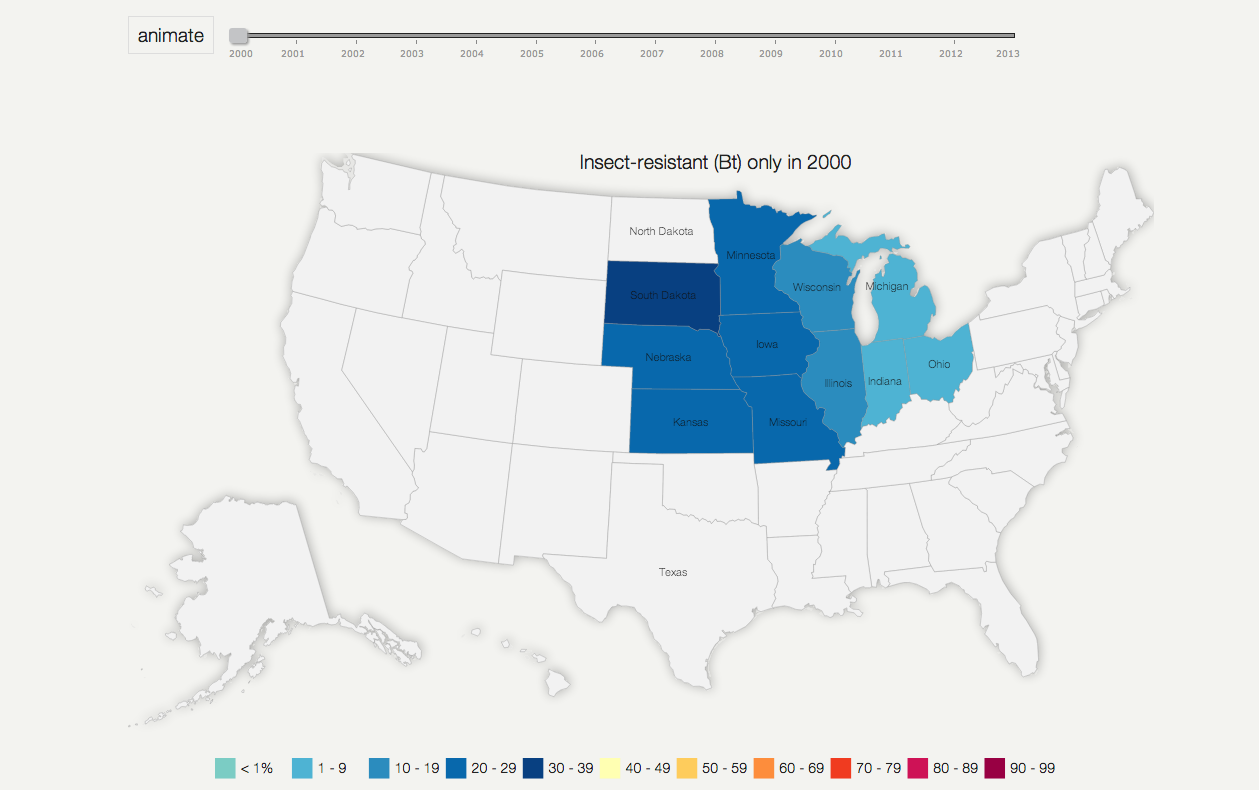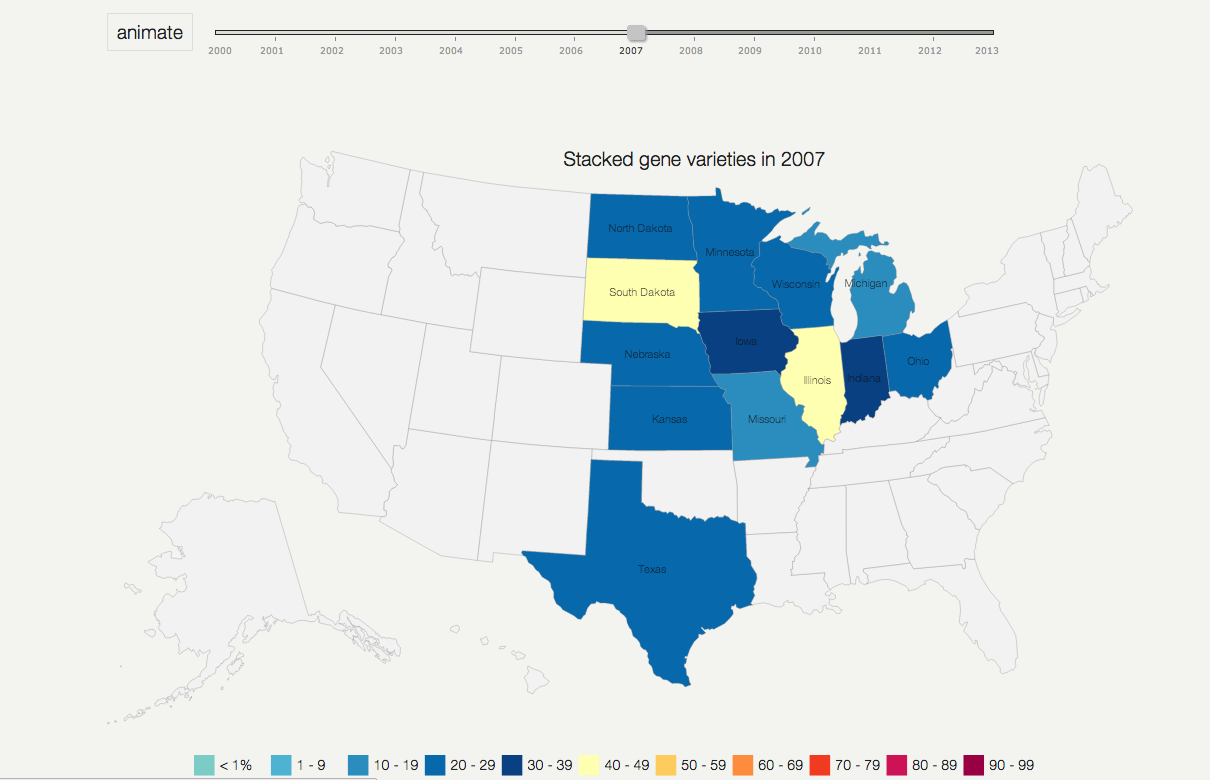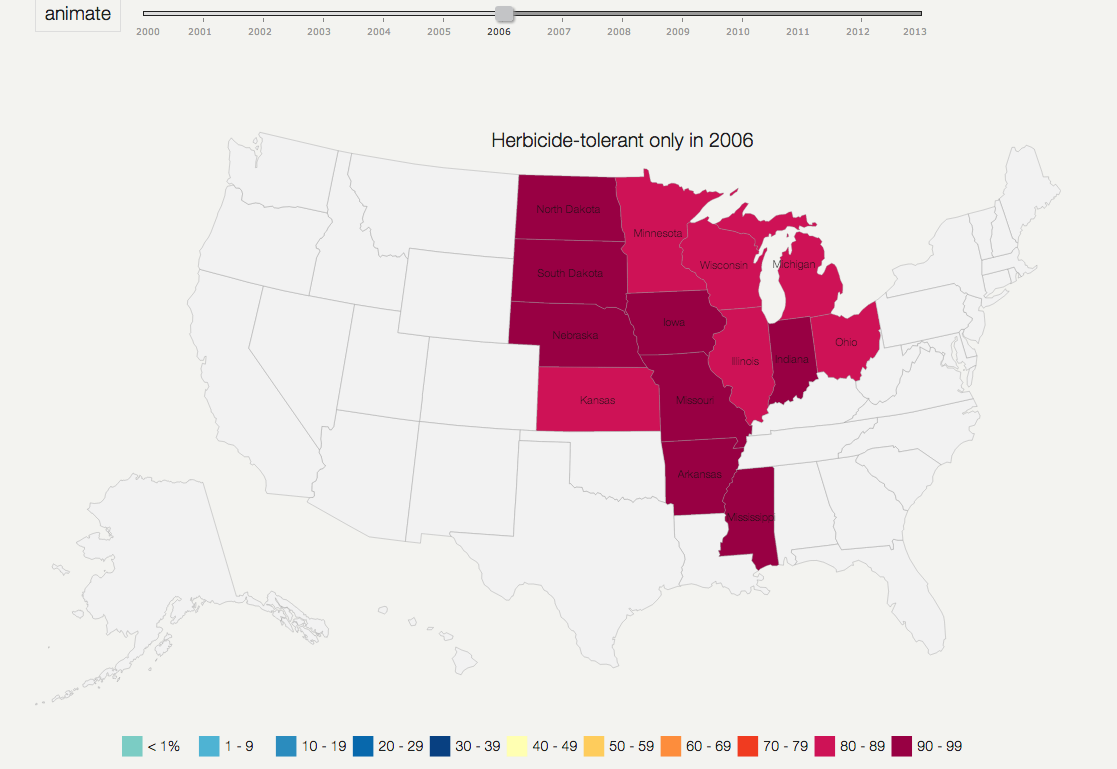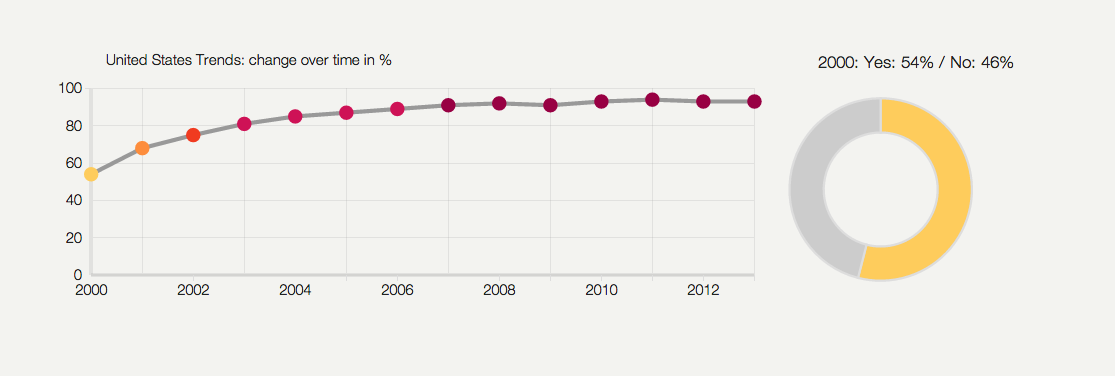Genetically Engineered
d3.js, JavaScript, jQuery, jQuery UI
GeoJSON, TopoJSON, CSV
My Role in This Project
Position:
Research, Design & Development
Design:
Data Visualization
Data:
Processing and Cleaning: Excel
Engineering:
Front-end: D3.js, JavaScript, jQuery, jQuery UI, HTML5, CSS
The National Agricultural Statistics Service conducts the June Agricultural Survey in all States each year. Randomly selected farmers across the United States were asked if they planted corn, soybeans, or Upland cotton seed that, through biotechnology, is resistant to herbicides, insects, or both. Conventionally bred herbicide resistant varieties are excluded. Insect resistant varieties include only those containing bacillus thuringiensis (Bt). The Bt varieties include those that contain more than one gene that can resist different types of insects. Stacked gene varieties include only those containing biotech traits for both herbicide and insect resistance. Genetically modified crops are presented as a % of the total crop production.
- Insect-resistant (Bt) only
- Herbicide-tolerant only
- Stacked gene varieties
- All GE varieties
- Insect-resistant (Bt) only
- Herbicide-tolerant only
- Stacked gene varieties
- All GE varieties
- Herbicide-tolerant only



